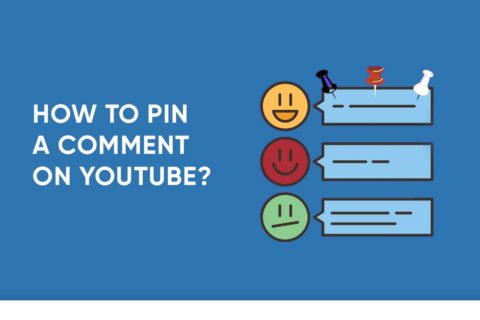Having relevant video content on your website can be an engaging feature. Maybe you are giving instructions on a subject, but you feel like it would be comprehended better when it’s also shown by video, or you have a corporate website where you want to show a video from your business on YouTube. Possibilities are endless on why you want to play a video on your blog or website, but converting videos to different formats to play on your website can be time-consuming and complicated. The easiest way to add a video in HTML is to let YouTube play the videos on your web page by embedding the video. Here is a step-by-step guide on how to embed a YouTube video in HTML.
How to Insert a Video in HTML Using the Embed Code
Follow these steps to embed videos in your webpage:
- Open the YouTube page and find the video you want to embed. You can buy YouTube likes to embed a highly engagement video.
- Click on the “Share” button located under the video to open the sharing options.
- Next, click the “Embed” option, which will appear under “Share a Link.” This will open a screen with the YouTube video embed code, which is also called an iframe code. If you try to embed your own video, it would be great to learn how to get verified on YouTube to look more professional.
- Here you can adjust the dimensions of the video by setting the width and height.
- YouTube also allows you to customize your video by giving you the option to start it from the point you want. Type in the desired starting time next to the space at the “Start at” option and check the box.
- While you are here, you can add any other parameters you want to the URL. (Details are under “How to Use Parameters”)
- Click “Copy” to copy the YouTube embed code to your clipboard.
- Open your web page’s HTML options. Websites are built with HTML codes, and the YouTube embed code is designed to fit into this code so that the video is shown without any changes.
- Find where you want to put your video on the HTML page. Everything you have displayed on the page is also written in the code. So, for example, if you want your video to be under the title “How to Embed Tutorial,” your code will look something like this:

<!DOCTYPE html>
<html>
<body>
<title>How to Embed Tutorial</title>
<br>
<iframe width=”560″ height=”315″ src=”https://www.youtube.com/embed/6zbsUtQL4nY” frameborder=”0″allow=”accelerometer; autoplay; clipboard-write; encrypted-media; gyroscope; picture-in-picture” allowfullscreen></iframe>
</body>
</html>
- Paste the video code where you want it to be.
- Save the changes. Check if the video is at the right spot on the website.
How to Use Parameters
YouTube offers some options to customize the video-playing experience. You can still add some more features if you tinker a little bit with the embed code by adding additional parameters. Here we gathered some useful parameters you might want to make use of.
YouTube Controls Parameter
By using the YouTube controls parameter, you can either hide the controls at the bottom of the video or let them stay.
‘controls=0’ means player controls do not display
‘controls=1’ means player controls display
Modestbranding Parameter
The modest branding parameter is responsible for showing any type of branding. In this case, you can hide the logo and branded play button present in Youtube videos. Add ‘modestbranding=1’ to the iframe code to remove branding.
Loop Parameter
If you want to play your video on a loop forever, you have to use the loop parameter. ‘loop=1’ means the video will loop, whereas ‘loop=0’ means the video will only play once, which is also the default mode.
YouTube Video Autoplay Parameter
You can make an embedded video start to play automatically on your webpage by using the autoplay parameter. Adding ‘autoplay=1’ to the embed code will make the video play automatically.
Mute Parameter
If you are using the autoplay or loop parameter, you might want to consider adding the mute parameter as well because an automatically starting or never-ending video can annoy your visitor and cause them to leave your website prematurely. ‘mute=1’ means that the video will play on mute.

NOTE: To use any of the parameters, add the ones you want to the video embed code right after the video ID using ‘&’. (e.g. <iframe width=”560″ height=”315″ src=”https://www.youtube.com/embed/5cWa4tbSmp?&modestbranding=1&loop=1“
Since its initial launch in 2005, YouTube has continuously improved its features to enhance YouTube users' experience and help content creators engage...
YouTube attracts thousands of viewers hourly to watch videos and talk about their interests. Therefore, if you consider a new career as a YouTuber or ...
If it doesn’t work, you should contact YouTube Support.
Conclusion on How to Embed a YouTube Video in HTML
In this article, we have gone over why using a YouTube video on your website or blog post can be beneficial and explained how to embed a YouTube video with the embed code provided by YouTube to HTML. Additionally, we detailed the use of parameters, their functions, and how the addition of parameters can customize the video’s playing experience on your website according to your needs.









1 Comment
I am required to embed a YouTube video every now and then for my profession. Will be waiting for more posts like this.q